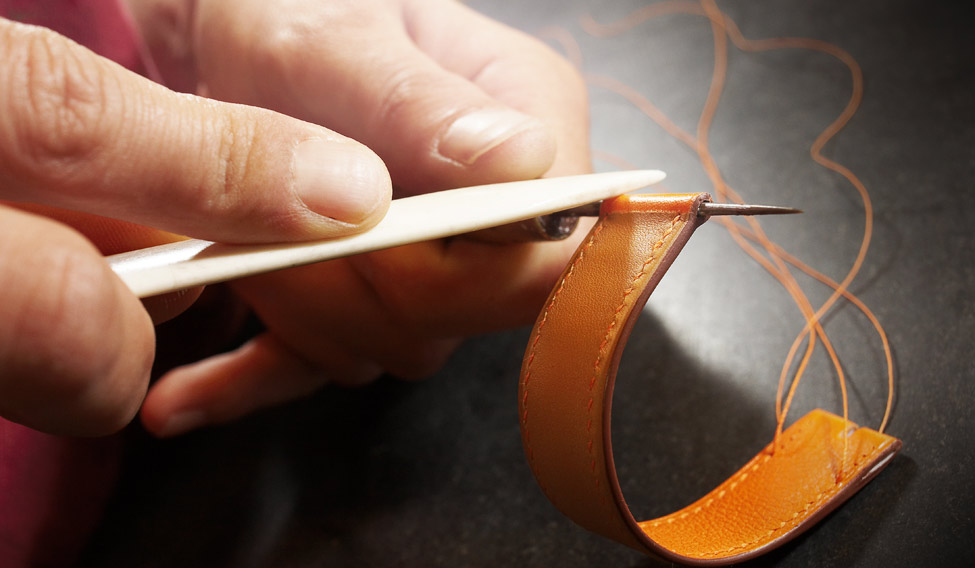It all started with a long, forlorn journey of an orphan from the German town of Krefeld in 1801. The sixth child of an innkeeper, Thierry Hermès moved to Paris and opened a harness workshop in 1937. A gifted artisan, Thierry soon earned a reputation for his highly durable and exquisitely hand-finished products. His famed ‘saddle stitch’—wherein a flaxen thread and two needles cross each other in the same hole, ensuring it never comes loose—echoed a Parisian perfection. From designing carriage fittings for royal coronations to creating the cult of the Kelly and Birkin bags, Hermès’s savoir faire in fine leather accessories has been exemplary.
Over the last two centuries, the company has largely banked on just one secret to success. “We communicate with our hands,” says Laurent Dordet, CEO, La Montre Hermès. “Our products are our ambassadors and what matters the most is that what you buy from Hermès lasts forever. We master what we create and we have the skill to maintain, repair and recreate.”
Though the company is widely known for its luxurious leather accessories, scarves, ties, perfumes and jewellery, Hermès has a long history in selling watches as well. Unlike the rest of the brand’s business, which is concentrated in France, the watch division is based in Brügg, a tiny, picturesque town in Switzerland.
Called the La Montre Hermès, the watchmaking offshoot of the company is responsible for not just the assembly of timepieces, but also for making the most impeccable leather straps for watches. Set up in 2006, the strap-making atelier here employs eight artisans who make 1,20,000 straps a year. While 90 per cent of the Hermès straps are made in Switzerland, some bespoke orders and highly specialised straps are made at another facility in Paris.
We visited this workshop in late January and captured the magic of nimble fingers that turn colourful leather hides into beautiful bands for varied timepieces. The story of an Hermès strap begins in the storage room, which is temperature controlled to ensure the highly expensive stock of hides is damage proof. The company sources its raw material from tanneries across Europe, which provide for the most exotic demands—from ostrich hide to alligator leather in glossy pinks and blues, to buttery smooth calf skin and the precious Barenia leather. While the alligator skins are imported from Mississippi, the Barenia—a thick brown, oily leather with remarkable sheen—is ordered from an exclusive tannery in the Alsace region in France.
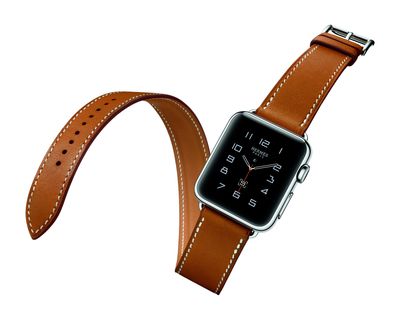
According to Dordet, Hermès offers more than 100 colours and infinite possibilities for watch straps. “We have a lot of ideas to push leather accessories in the world of watchmaking in the coming months,” says Dordet, who was previously the CEO of Hermès Maroquinerie Sellerie, its leather goods division. “Colours are the key attraction for women buyers and we can even make straps to match their Kelly or Birkin bags. Watches are an integral part of the male wardrobe these days and men are experimenting with colours like indigo, reds and greys, apart from the usual black and brown. So we are good!”
The entire process of strap-making is incredibly intense and involves around 50 stages. It takes at least two hours to work on one strap and, in case of customisation and special requests, the procedure can take longer. For instance, the strap for the Hermès In the Pocket watch takes craftsmen about a week to produce from start to finish.
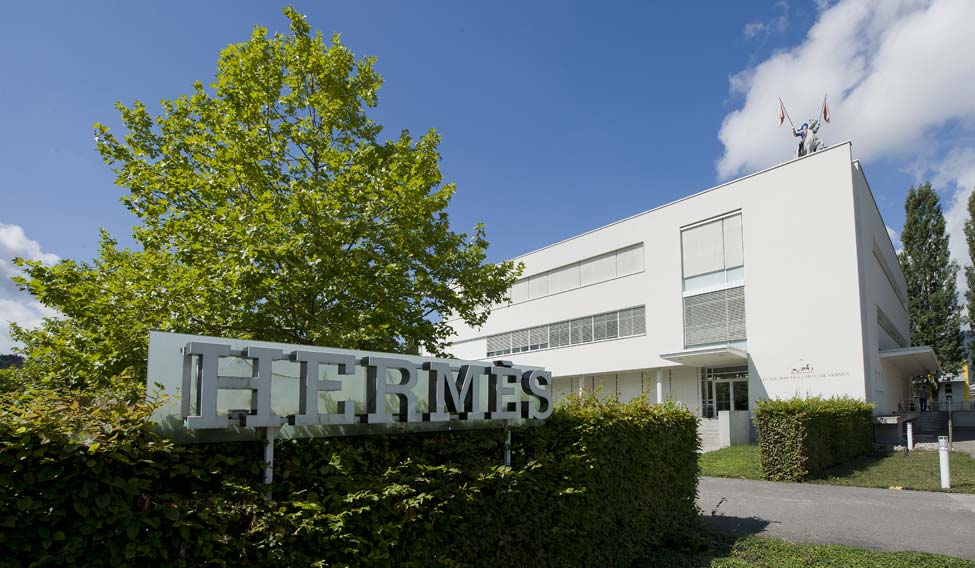 La Montre Hermès in Brügg, Switzerland.
La Montre Hermès in Brügg, Switzerland.
The artisans here have been trained at the Paris workshop where all the splendid Birkin bags are handcrafted to perfection. The skills have been passed on from one craftsman to another over generations and the obsession with details is absolutely amazing.
Once the leather is chosen from a delightful array of colours, it is carefully cut and split into three layers. The upper layer is what one sees on the face of the strap, the middle layer is a textile lining and the third layer is what is in contact with the wearer’s wrist.
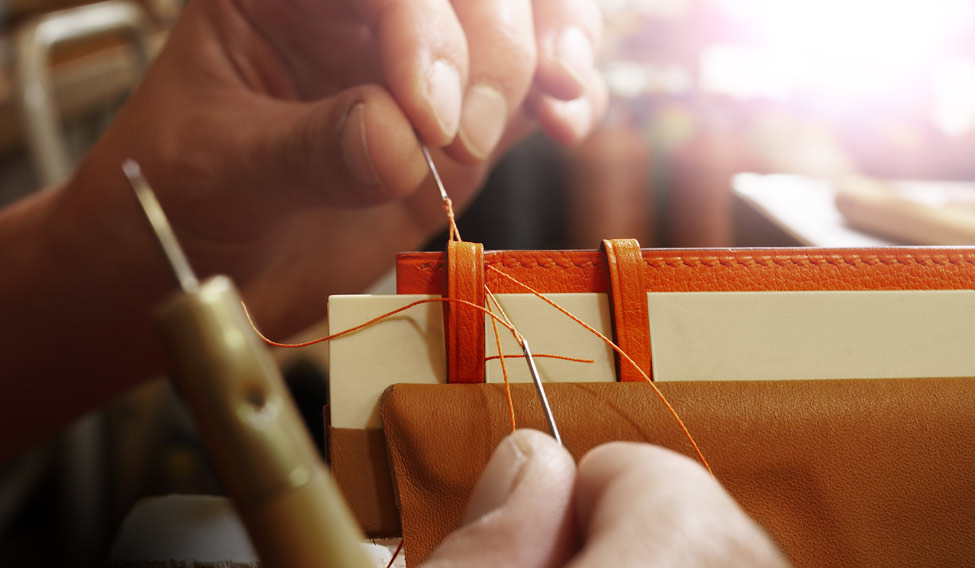 The brand’s trademark “saddle stitch” plays a crucial role in strap-making
The brand’s trademark “saddle stitch” plays a crucial role in strap-making
The pre-cut straps are flattened to paper-thickness at their outer edges. A strip of Viledon is placed as a lining between the upper and lower sections of strap, and the whole assembly is glued together. The assembled strap is then sent to the “table workshop” where one artisan hand-stitches, hammers, seals and paints it.
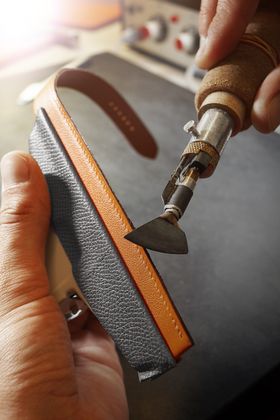
The brand’s trademark “saddle stitch” plays a crucial role in strap-making as well. The clean, creative stitch begins with the artist using an awl to make the holes on the strap. This is followed by two threaded needles crossing each hole in a way that creates a strong knot. The last three holes on either side and at the end of the strap are doubled. The stitch is sealed with a drop of glue and smoothened with gentle hammering.
The raw edges of the strap are brushed with sand paper and touched up with a layer of dye. A flat, warm, iron-like tool is then used to heat or glaze the edges. Each step is repeated until the look is perfectly uniform and the strap looks as if it came from a single piece of leather.
Making the strap’s loops is one of the most challenging tasks. While one loop is fixed, the other is movable. The artisan has to cut two thin strips and pare down the edges to make a loop of the same thickness as the edges where it is supposed to join. The finishing steps involve the same process as in the case of a strap—gluing, marking for stitching, sanding, dying, smoothening and polishing. The most intricate part is to fix the loop to the strap with six perfect stitches that merge the ends.
Each loop is made to measure, depending on the thickness of the strap. The loop that holds the end of the strap in place is finished off with a little “H” hand stitched on the inside, which is only seen by the wearer.
Finally, the straps are polished with beeswax and sent to the quality control department. After close scrutiny, each strap is authenticated using a letter that reveals the year of manufacture and a geometric shape designating the most precious hides. The letter “T,” for instance, denotes bands made in 2015. An “L” means the strap was made at La Montre Hermès in Bienne and a “V” means it was made in Paris.
While one-third of the Hermès straps are made from alligator skin, rest include calf, ostrich and buffalo hide. One alligator skin provides for just four straps, as only the belly portion is put to use. The rest of the skin is too scaly for strap-making. A calf hide is also partially used for making around 40 straps from the skin on the calf’s back. The remains are then donated to art schools.
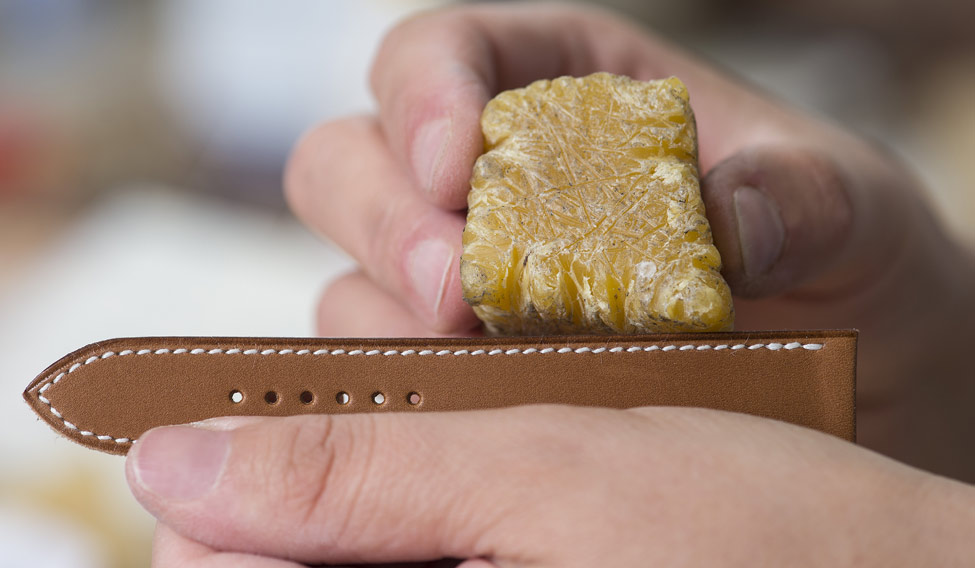 The entire process of strap-making involves around 50 steps
The entire process of strap-making involves around 50 steps
The raw material, according to the company, is all ethically sourced from select farms and tanneries. “We have a team that visits tanneries, animal farms and everything else related to the supply chain,” says Dordet. “We are absolutely confident and conscious about our sourcing. There could be one or two incidents because of the nature of the business but we take immediate note of the same and fix the issues.”
Like most luxury products, the Hermès straps are produced in limited numbers. Apart from the exquisite bands made for the in-house watches, the company also supplies to Parmigiani. “In 2006, Hermès acquired a 25 per cent stake in the Vaucher Manufacture Fleurier from the Sandoz Family Foundation, which also owns Parmigiani. They are our business partner, so we supply straps to them,” says Dordet, who is extremely satisfied with the brand’s latest collaboration with Apple. “Even though the product lines are very different, the two companies have mutual admiration for each other. It all started with a casual discussion and then the Apple team approached our headquarters. The idea was discussed at length and everybody decided in favour of this collaboration. It’s an unusual combination and yet we have been very successful.”
For more stories visit WatchTime India





